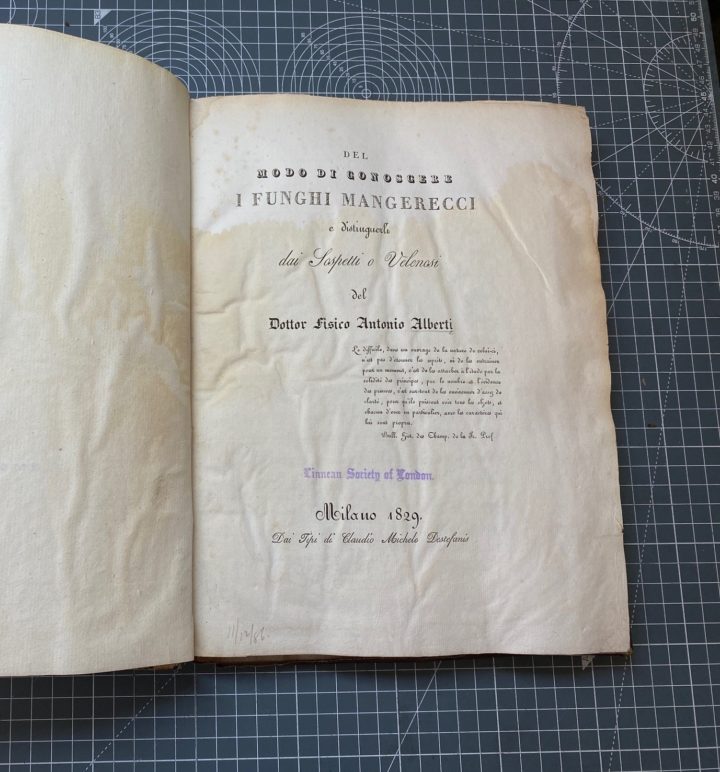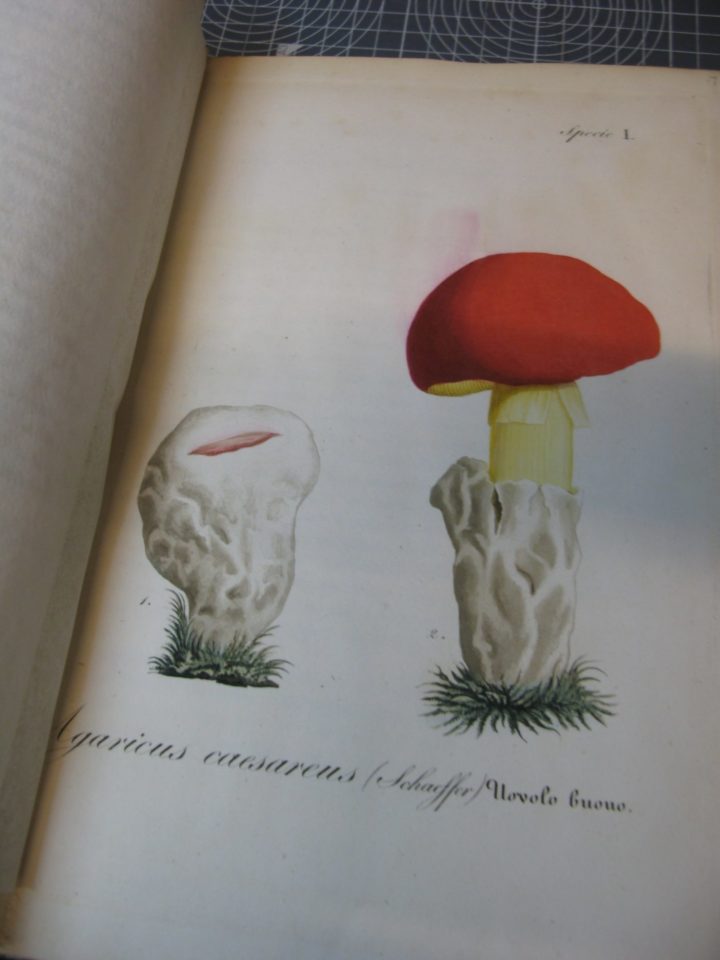After the Flood
Conservator Janet Ashdown takes us through the process of rescuing one of our treasures, which had become damaged by a water leak in June 2021.
Published on 11th January 2023
In June 2021, after a heavy rain storm, water leaked from the roof of The Linnean Society & soaked into the wall in a corner of the Library Reading Room. Some of the adjacent shelving became wet and a number of books were affected. Quick action on the part of our staff meant that the damage was limited, but nevertheless books on several banks of shelves were affected.
Work began immediately to remove all books from the affected shelves. Polythene sheets were laid across the Library tables and floors and books were decanted systematically. Books were then sorted according to the extent of the damage. The wettest were put aside to be collected later that day by Harwell Restoration Services for freezing, before being professionally dried. Paper begins to go mouldy very quickly if action is not taken within hours. The remaining damp books were taken to a large room where they were stood on end and dried over the next few days with the help of open windows and fans.
Many of the books, after drying, were sufficiently undamaged that they could be re-shelved once the shelving had thoroughly dried out. The remainder needed varying degrees of repair. Those taken for treatment by Harwell’s were returned after a few months and listed for repair.
Repairs Begin - I Funghi Mangerecci By Antonio Alberti, 1829


I Funghi Mangerecci, published in Milan in 1829, was one of the books damaged in the flood. Dirty water, pooling on the shelf, had soaked up into the binding and pages. The boards had distorted, the hinge was damaged and the boards were in danger of becoming completely detached. The spine, which had been repaired many years ago, was in a poor state. Every page had a brown tidemark of dirty water and some of the paint on the beautiful hand-coloured plates had bled. The fine tissue paper interleaving was also stained and distorted.

A test of the paint showed the plates would withstand gentle washing. This successfully removed both the tideline and most of the bleeding. The text pages were also washed, but the tissue interleaving was too fragile to treat and was replaced with a light Japanese tissue.


The original sewing was on hemp cords cut into the sections, which had prevented full flat opening of the book. The book was therefore re-sewn on narrow unbleached linen tapes, which are also less damaging for the pages.

The binding repair entailed dampening and flattening the boards in a press over several days. The original covering was thinned vellum, dyed to resemble calf. The spine, previously repaired with calf, and by now seriously degraded, was given a new covering made from French parchment (probably sheep) which was dyed to match the boards.

By Janet Ashdown, Conservator
Unless otherwise indicated, all images © the Linnean Society of London, 2022
